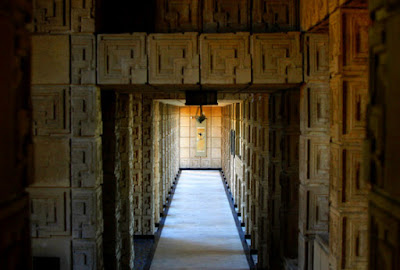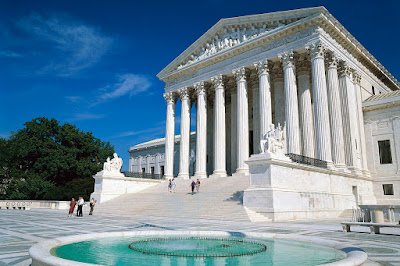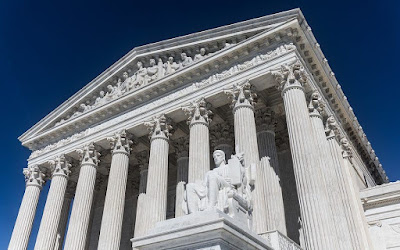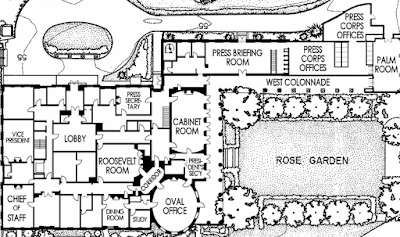I have never been a big fan of Facebook. Years ago the conversation among business people was insistent: "You
have to be on Facebook. It's a sure-fire way to generate business leads." The advice was so relentless that I started to feel guilty for not having a presence on Facebook. Eventually, I opened an account, posted a few things about my architectural practice, and let it sit there as a little-visited on-line presence. If people commented on my material I hardly noticed because I seldom visited Facebook. I did gain a few re-connects with some old friends. That was nice, but they probably would have found me anyway with a Google search. The rest of what I noticed on Facebook was mostly pictures of people's dinner food or brags about their vacations. I understand that many people use social media as a way of staying in touch with family and friends. I also hear about people with rare diseases getting information and support they might never have found without Facebook. There are many good and useful reasons to enjoy Facebook. In my case those were not strong incentives. So, when comes the recent revelations of Facebook facilitating unsavory political activity by Cambridge Analytica it was not difficult for me to jettison Facebook from my collection of aps. I thought it would be a good way to protest the insidious and over-sized influence of this platform. A way of removing a thumb from the scale of political debate. I realize for me it was not a great sacrifice; others will have a difficult time cutting the Facebook tether. It won't be the right thing to do for everyone.
I killed my Facebook account last Wednesday. (By the way, account death does not happen immediately. Apparently, Facebook needs time to ruminate over my decision. Weeks, in fact. I don't know why.) That afternoon I heard commentary on the radio that for every 100,000 users in the United States who may quit Facebook, there are 100,000 new users in India who replace us
every day. Outrage and protestations in the U.S. are not going to put a dent into the
billions of users Facebook profits from worldwide. My feeble protest felt like a finger in the dike against a tsunami of mis-information threatening the foundations of reality.
That last sentence is not hyperbole. Think about what Facebook actually allowed to happen: Cambridge Analytica mined tidbits of Facebook data to identify (through psychographic profiling) those likely to be influenced by false and/or one-sided information in support of presidential candidate Donald Trump. This statistical knowledge was used to create an on-line environment that presented one-sided "facts" and "news" that encouraged and disseminated a Trumpian view of the world. This was done with the intent of creating a sense of outrage among likely Trump supporters that would nurture their votes.
Some will say this is simply a form of advertising for a political product. No. This is not advertising. Advertising looks like advertising. Cambridge Analytica created a cyber environment where opinions masquerade as facts. This is a world where low-rent prejudices commandeer debates. Where conversations become shouting matches. That is not advertising, nor is it possible to identify it as such. This was done in secrecy.
A woman was quoted on the evening news, "I don't worry about my data being mined... I have nothing to hide." Others have said they're not influenced by things they see on-line; they simply don't pay attention to it. Both of these positions miss the point. This is not about any particular individual and their on-line experiences. This is a dark game of statistics and algorithms. Cambridge Analytica was able to gather millions of innocuous data points in order to identify likely Trump voters and people sitting on the fence. They didn't advertise to these people. Instead, they literally changed the digital world these people saw
without their knowledge. Cambridge Analytica created an alternate reality for these particular people. How many Trump voters did this drive to the polls? That is unknowable. But common sense tells us it was some number of people. In a close election, did that make a difference?
The monetary worth of Facebook is $500 billion. Owner Mark Zuckerberg has a personal worth of $64 billion. (!!!) These numbers have been dented in recent days by a stock sell-off, but Facebook will certainly rebound. Other corporate behemoths have similar wealth. Google, Twitter, Amazon, YouTube, Apple. Wealth is power. As we have recently learned, much of that power is exercised in secretive and hidden ways. If the singularity
(look it up) is imminent, we need to get a handle on the tech giants who run our world in order to direct our own futures in a positive direction. To be explicit: a handful of corporate entities have created an information monopoly. They have the potential to run amok and need to be regulated. Just as the monopoly of ATT was broken up at the beginning of the cyber era, perhaps these monopolies of the new millennium should at least be regulated.
This is the first article I've written that strays from the stated purpose of this blog. There's nothing here about architecture. There's not even a picture of a building. I feel this subject is so important that other matters are trivial. I will no longer use Facebook as a promotional tool for my architectural work. But I still have this blog. And I post occasionally on Instagram. Oh, wait a second. Instagram is owned by Facebook. And this blog is run by Google. I surf the web on Apple devices linked by their iCloud. Yikes! Is it already too late?
The issue is controlling the trafficking in human data. This is a new kind of corrupting power.
Twenty-first century technology is not inherently bad. Many beautiful things are possible because of it. I would like to end this discussion on a positive note. I don't have an image of a remarkable work of architecture to illustrate this article, but here is one of the most stunningly beautiful images I have seen in recent years in
any category: the simultaneous landing of two rocket ships by Elon Musk's Space X corporation. This is the good we are aiming for in our techno-cyber world.






































